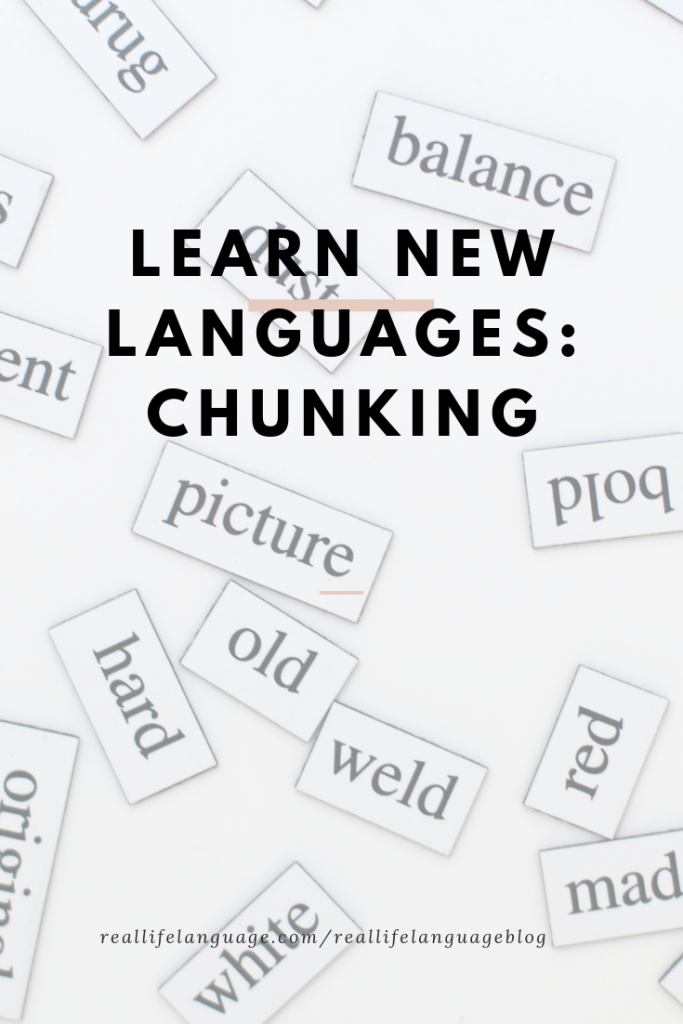
Learn New Languages: Chunking
Vocabulary is the building blocks of languages. All those words you learn can be built up into phrases, sentences and paragraphs. Clearly, the more words you know, the easier it is to learn a new language.
There is this idea that you can learn a lot of words, they start working together and then we able to speak a language. This is, on one hand, very much true. On the other hand, it is not true at all. You need to learn words and phrases that are going to stick with you and that are useful. This is very difficult when the words you are learning are out of context.
The key is chunking. This is learning meaningful words and phrases of vocabulary grouped together into chunks-the perfect dose for learning new languages. Consider these words:
ball
tomorrow
I’d
like
this
All of these words can be useful. However, memorizing them separately will not be particularly useful. For example, I’d like. That is a very useful phrase. Tomorrow is high-frequency and useful. I’d like this would be useful. Learning the equivalent of this ball in your target language will likely help you learn some grammar rules in context. This is why understanding chunking for learning new languages is important.
What’s really important is to learn vocabulary that’s going to lead you to be able to do something as you learn the new language. Not only does the vocabulary being in context make it learning and recall easier, more efficient and faster, these chunks serve useful communicative purposes.
Phrase books are an excellent way to use chunking when you learn a new language. Survival words and phrases are offered for contexts such as eating, a hotel, getting and phrases of courtesy. All of the words and phrases you will learn will also teach you grammar and vocabulary in context. The phrase I would like will not only give you the language to make a request, you will also learn the subject pronoun for I and be exposed to the conditional tense with would.
There some excellent phrase books out there to get you started with chunking to learn a new language. Lonely Planet and Berlitz are just two among many. You can also make your own.
Online translators have come a long way. In their early days, they were very unsophisticated. If one was learning French and searching for how to say the, one word might come up. There are three ways to say this in French, and it is contingent on number and gender. Many older iterations of online translators were not sophisticated enough to be able to provide this accurately.
Google Translate is committed to always improving, so it is a great tool to use to create your own phrase books for a completely personalized language learning experience. Google Translate gets its information by scanning documents translated by humans. It also allows users to comment on translations they find, so the translations they are offering are, for the most part, more and more accurate all the time. You will still find some that don’t quite make sense. For example, maggio (Italian for May) came up when looking for the word may in the context of courtesy.
You can use GT to create your own lists of themed vocabulary and use chunking to learn new languages. You can press the sound button and hear the words. You can also copy them to a Google Sheet. The sheets can be downloaded as CSV files. These CSV files can be imported to a site like Quizlet, where you can play lots of games. You can also use them with Anki cards, like Gabriel Wyner outlines in Fluent Forever.
Looking for something a bit lower tech to learn new languages? Try these vocabulary columns with chunking. You can even request for a native speaker to record your words and phrases on Rhinospike. You can use those recordings to make your own playlists, too.